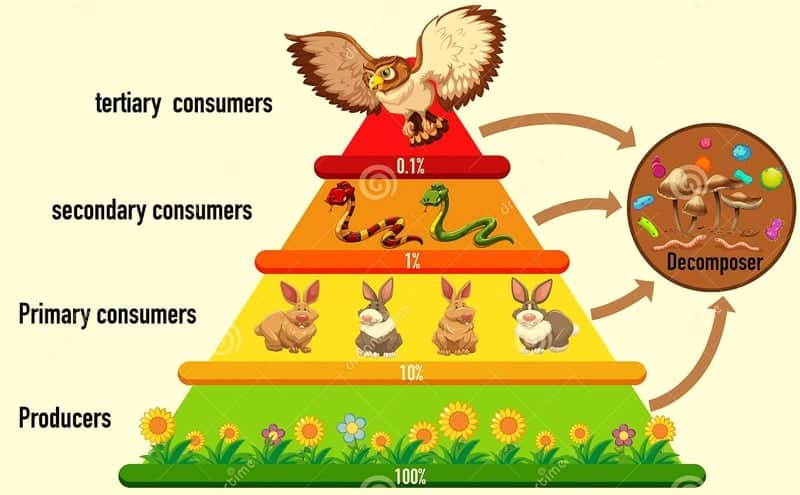Meaning of Ecology and Ecosystem in Agriculture
What is Ecology?
The study of agricultural plants and farm animals in connection to their environments can be described as agricultural ecology. The word ecology comes from the Greek word oikos, which means house or place of habitation.
In other words, one way to define agricultural ecology is as a field of research that examines how living things interact with one another and the environment.

In terms of agricultural ecology, there are two major branches:
• Autecology: The study of a single being, or a single species of organism, and its environment; an example of this would be the investigation of one goat and her environment as a whole.
• Synecology: Synecology is the study of the interactions between species or groups of organisms coexisting in a given area. As an illustration, consider the study of multiple fish in a fish pond with regard to their aquatic habitat.
[irp]
What is ecosystem?
An ecosystem is a community of farm animals and crop plants that coexist with their non-living surroundings.
In other words, an ecosystem in a farm context is made up of living and non-living elements that interact in a particular environment. It should be emphasized that a farm ecosystem is a natural system in which all living things (referred to as biotic factors) and non-living things (referred to as abiotic factors) interact within a farm surroundings or habitat.
Components Of Farm Ecosystem
There are two key parts that make up the farm ecology. These are the biotic (living) and abiotic (non-living) components, respectively.
Biotic Components
The live creatures are biotic components. (crop plants and farm animals). Two groups of biotic elements can be distinguished. Autotrophism and heterotrophism are these.
1. Autotrophism: This refers to a class of creatures that may produce their own food through the process of photosynthesis using either sunlight or chemicals.
In other words, autotrophs are organisms, primarily crop plants, that can make their own food, which is why they are referred to as producers. Green plants, also known as autotrophs, are producers. During photosynthesis, they use carbon dioxide, water, or simple inorganic substances as their raw materials to create organic compounds. Producers are green plants, also known as photoautotrophs.
Food is provided for the other species on the farm by producers or autotrophs
[irp]
2. Heterotrophism: There are often known as consumers, is a category of species, primarily farm animals, that cannot produce their own food but instead rely directly or indirectly on plants for nutrition.
Cattle, sheep, goats, and rabbit are examples of farm animals that are herbivores or primary consumers, whereas animals or organisms that feed on primary consumers are known as secondary consumers.
Tertiary consumers are animals that eat the secondary consumers. most of them can be refered to as predators
Abiotic Components
The non-living things that make up an ecosystem’s abiotic components include:
- Environmental elements such as temperature, wind, humidity, sunlight, and rainfall.
- Inorganic substances and nutrients including calcium, phosphorus, oxygen, nitrogen, and carbon dioxide.
- Edaphic elements like topography, rocks, and soils.
- Additional elements including water, fire, dust, and storms.
[irp]
Interaction Among The Components Of Ecosystem
The diverse elements of an ecosystem interact in a special way. In the presence of sunlight, green crop plants use carbon dioxide, water, and chlorophyll to make carbohydrates or starches.
As they consume these plants for food for survival, farm animals also provide carbon dioxide that crop plants can absorb for their survival as well.
To release nutrients into the soil, microorganisms and other decomposers break down dead plants and animal dung. In order to employ these nutrients in the manufacturing of food, plants absorb them for their own use.
Animals utilize the oxygen produced by crop plants during photosynthesis for regular breathing.



